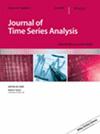Speculative Bubbles in the Recent AI Boom: Nasdaq and the Magnificent Seven
Abstract
The recent artificial intelligence (AI) boom covers a period of rapid innovation and wide adoption of AI intelligence technologies across diverse industries. These developments have fueled an unprecedented frenzy in the Nasdaq, with AI-focused companies experiencing soaring stock prices that raise concerns about speculative bubbles and real-economy consequences. Against this background, this study investigates the formation of speculative bubbles in the Nasdaq stock market with a specific focus on the so-called Magnificent Seven (Mag-7) individual stocks during the AI boom, spanning the period from January 2017 to January 2025. We apply the real-time PSY bubble detection methodology of Phillips et al. (2015a, 2015b) while controlling for market and industry factors for individual stocks. Confidence intervals to assess the degree of speculative behavior in asset price dynamics are calculated using the near-unit root approach of Phillips (2023). The findings reveal the presence of speculative bubbles in the Nasdaq stock market and across all Mag-7 stocks. Nvidia and Microsoft experience the longest speculative periods over January 2017–December 2021, while Nvidia and Tesla show the fastest rates of explosive behavior. Speculative bubbles persist in the market and in six of the seven stocks (excluding Apple) from December 2022 to January 2025. Near-unit-root inference indicates mildly explosive dynamics for Nvidia and Tesla (2017–2021) and local-to-unity near explosive behavior for all assets in both periods.

 求助内容:
求助内容: 应助结果提醒方式:
应助结果提醒方式:


